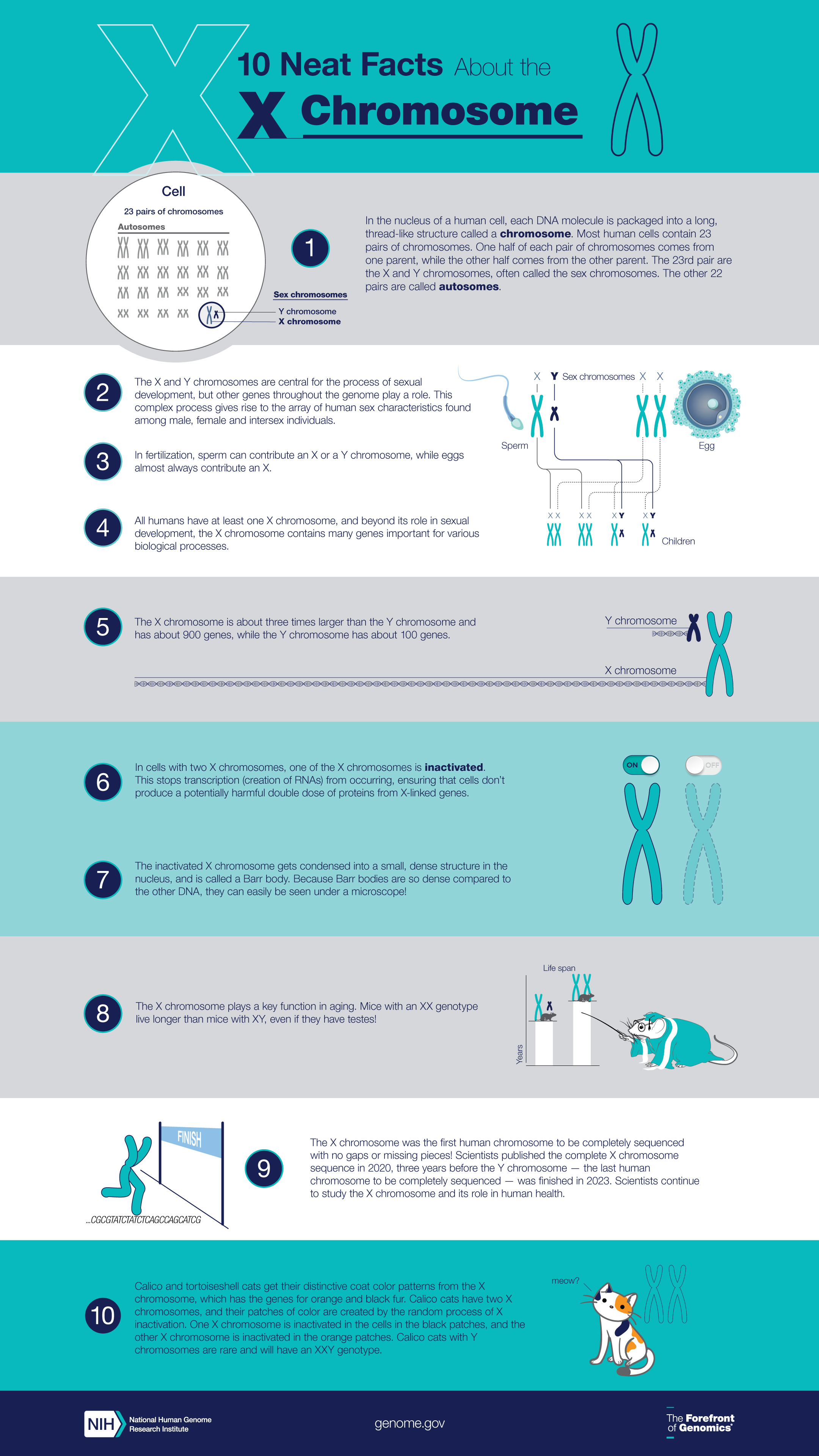X Chromosome Infographic
The X chromosome is part of sexual development and many other biological processes, including how some cats get their distinctive coat colors.

Last updated: May 28, 2024
Scan to visit
The X chromosome is part of sexual development and many other biological processes, including how some cats get their distinctive coat colors.

Last updated: May 28, 2024
